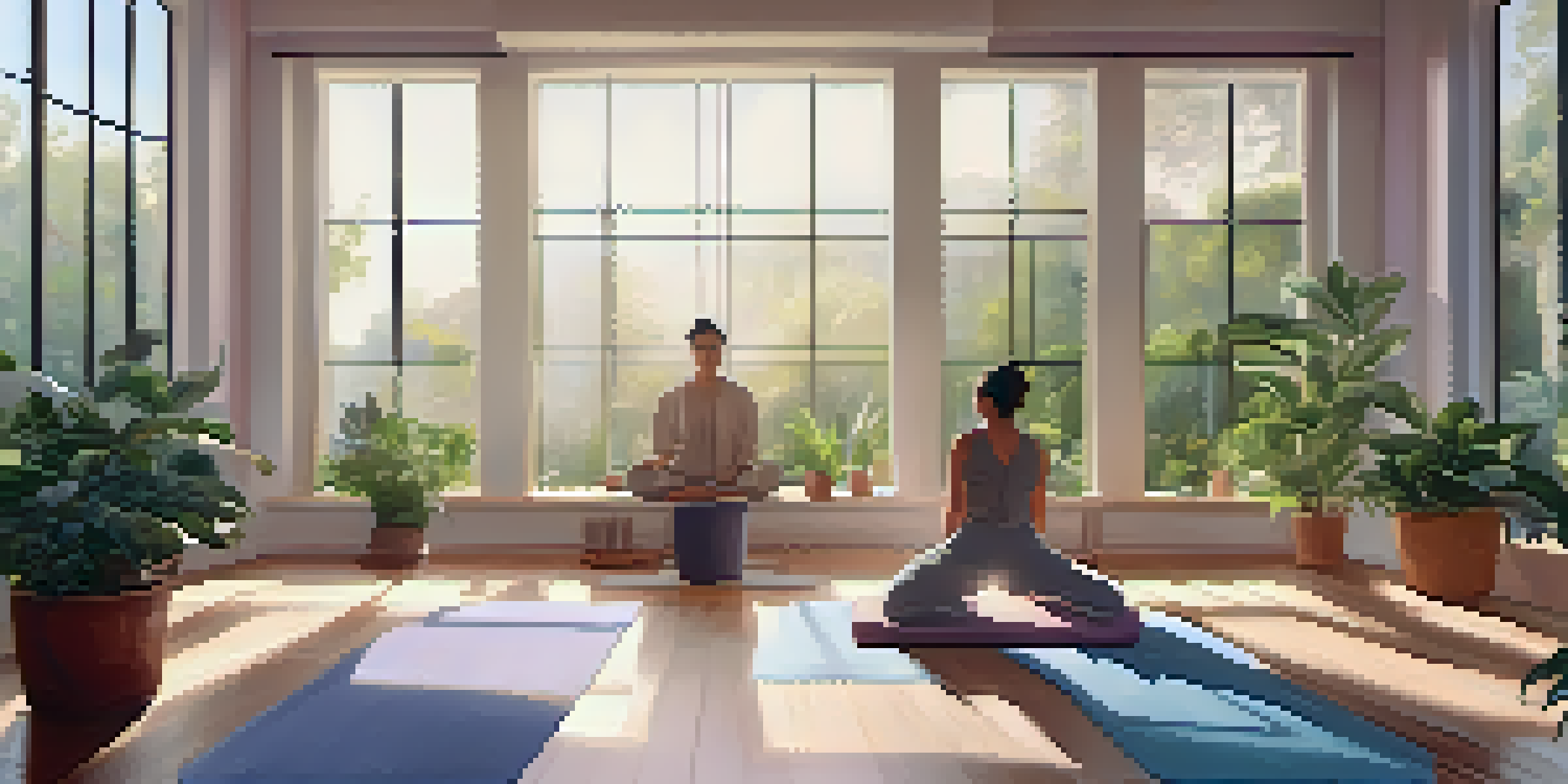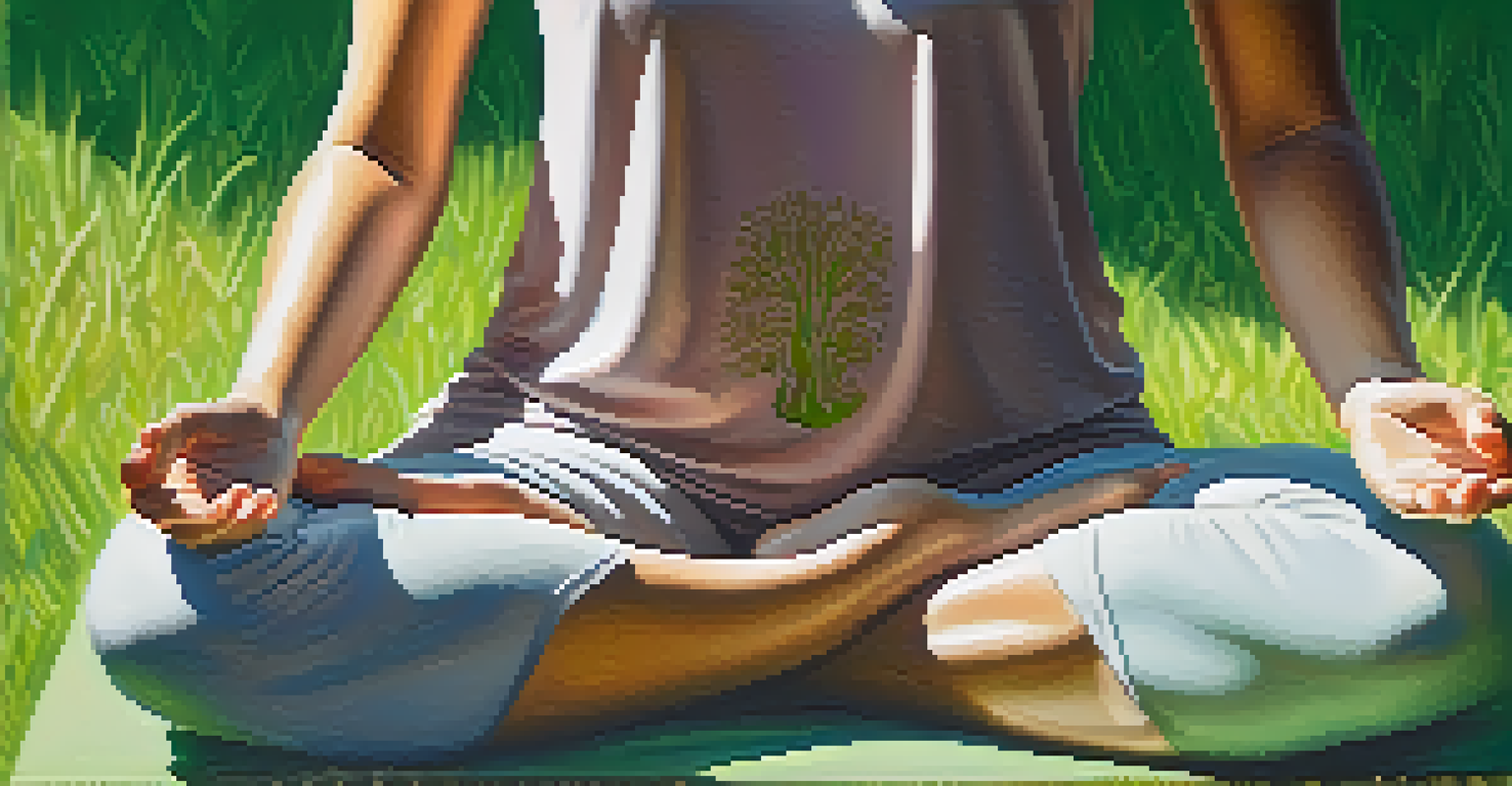Meditation Techniques to Enhance Your Yoga Journey

Understanding the Connection Between Meditation and Yoga
Meditation and yoga are two sides of the same coin, each enhancing the other. While yoga focuses on physical postures and breathing, meditation dives deeper into mindfulness and mental clarity. By integrating meditation into your yoga practice, you can cultivate a holistic approach that nurtures both body and mind.
Meditation is the discovery that the point of life is always arrived at in the immediate moment.
Many practitioners find that meditation helps them become more present during yoga sessions. This presence allows for deeper stretches and a more profound connection to one's body. When you quiet the mind through meditation, you create space to truly listen to what your body needs.
Ultimately, this synergy not only improves your yoga practice but also enriches your daily life. You may find yourself more centered and less reactive to stressors outside of your yoga mat. Embracing this connection lays the groundwork for a transformative journey.
Breath Awareness: The Foundation of Meditation in Yoga
Breath awareness is a fundamental aspect of both meditation and yoga. By focusing on your breath, you anchor your mind, making it easier to enter a meditative state. In yoga, pranayama, or breath control, is often practiced to enhance vitality and clarity.

When you practice breath awareness, you learn to control your breathing patterns. This control not only aids in relaxation but also improves physical performance during yoga poses. Think of it as tuning an instrument; the better you tune your breath, the better your body can perform.
Meditation Enhances Yoga Practice
Integrating meditation into yoga fosters mindfulness and deepens the connection between body and mind.
Incorporating breath awareness into your routine can lead to a more mindful practice. You’ll find that as you deepen your breath, your movements become more fluid, and your mind becomes clearer. This harmony between breath and movement is what elevates your yoga journey.
Guided Visualization: A Powerful Meditation Technique
Guided visualization is a fantastic way to enhance your yoga practice by fostering a deeper mental connection. This technique involves imagining serene landscapes or visualizing energy flow during your yoga sessions. It can help you reach a state of relaxation that opens the door to greater self-awareness.
Yoga is the journey of the self, through the self, to the self.
By incorporating guided visualization, you can set intentions for your practice, such as focusing on strength, flexibility, or emotional release. Picture yourself achieving these goals as you move through your poses, which can boost your motivation and effectiveness. It’s like having a personal coach in your mind cheering you on.
Moreover, this technique can elevate your meditation sessions, making them more vivid and engaging. Over time, you may find that these visualizations become part of your muscle memory, enabling a deeper state of flow in both meditation and yoga. It’s a creative way to enrich your practice.
Mindfulness Meditation: Staying Present on the Mat
Mindfulness meditation is all about being present and aware of your thoughts and feelings without judgment. When practiced on the yoga mat, it can transform your experience from a physical workout into a journey of self-discovery. This technique encourages you to observe your body and mind as they are, fostering acceptance and compassion.
As you move through your yoga poses, practicing mindfulness allows you to notice how each posture feels. Are you holding tension somewhere? Are you fully engaged? This awareness can lead to adjustments that enhance your practice and prevent injury.
Breath Awareness is Key
Focusing on breath control improves relaxation and enhances physical performance in yoga poses.
By cultivating mindfulness, you not only improve your yoga but also develop skills you can carry into everyday life. You may find that your reactions to stress become more measured and thoughtful. This ripple effect can create a profound sense of peace both on and off the mat.
Loving-Kindness Meditation: Cultivating Compassion
Loving-kindness meditation, or 'Metta,' focuses on generating feelings of compassion for yourself and others. Integrating this practice into your yoga journey can foster a deep sense of connection, both with yourself and the world around you. It encourages you to embrace love and kindness, making for a more fulfilling practice.
During your yoga sessions, you can silently repeat phrases of goodwill, such as 'May I be happy, may I be healthy.' This practice helps cultivate positive feelings, which can enhance your emotional resilience. Imagine infusing your yoga with this warmth and openness; it can truly transform your experience.
As you develop compassion through loving-kindness meditation, you may notice an increase in your ability to empathize with others. This newfound perspective extends beyond the mat, creating a ripple effect of kindness in your daily interactions. It’s a beautiful way to enhance both your yoga and your relationships.
Chakra Meditation: Balancing Your Energy Centers
Chakra meditation focuses on balancing the seven energy centers in your body, which can enhance your yoga practice significantly. Each chakra corresponds to specific physical, emotional, and spiritual aspects of your being. By meditating on these energy centers, you can clear blockages and promote overall well-being.
As you practice yoga, you can incorporate chakra meditations by focusing on the corresponding chakra during certain poses. For example, when in heart-opening poses, you might visualize the heart chakra glowing brightly. This not only helps in physical alignment but also deepens your emotional release.
Journaling for Self-Discovery
Reflecting on your practice through journaling provides insights that promote personal growth and accountability.
By attending to your chakras, you create a more harmonious flow of energy, which can enhance your overall yoga experience. This practice encourages not only physical strength but emotional resilience as well. It’s a holistic approach that nurtures both body and spirit on your yoga journey.
Journaling: Reflecting on Your Meditation and Yoga Practice
Journaling is a powerful tool that can deepen your meditation and yoga experience. By writing about your thoughts and feelings after your practice, you can gain insights into your emotional and physical state. This reflection can help to track your progress and set intentions for future sessions.
After each yoga class or meditation, take a few moments to jot down what you experienced. What emotions came up? Were there moments of clarity or struggle? This practice encourages self-reflection and can reveal patterns that you may want to address in your practice.

Incorporating journaling into your routine adds a layer of accountability and allows for growth. It can become a cherished space for personal exploration, helping you remain engaged and inspired in your yoga journey. You’ll find that this blend of meditation, yoga, and reflection creates a rich tapestry of self-discovery.